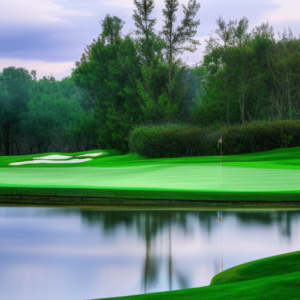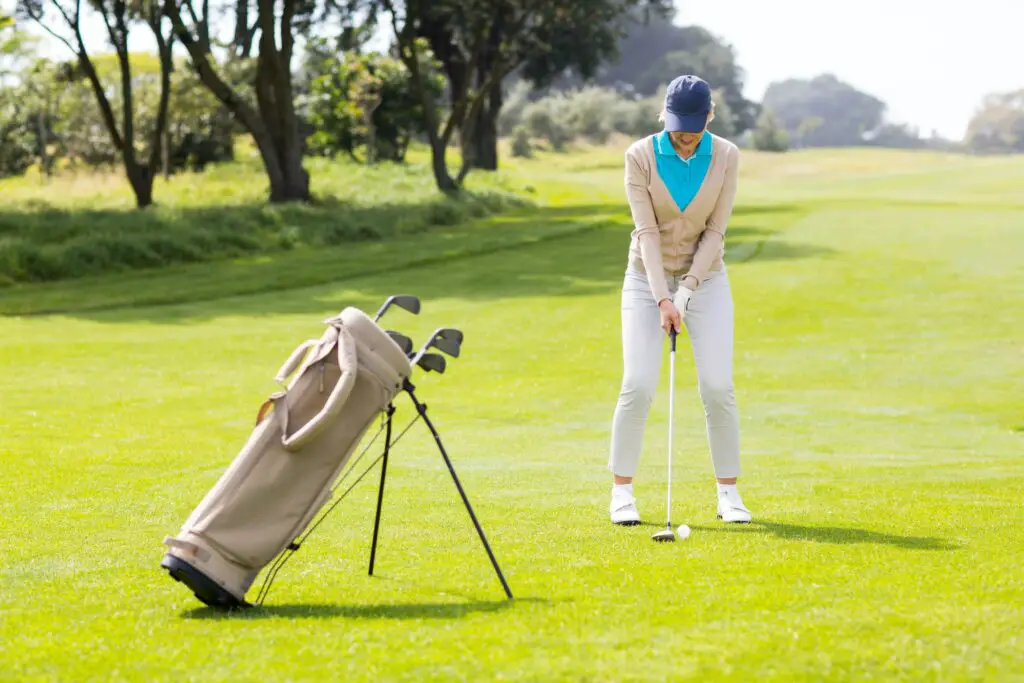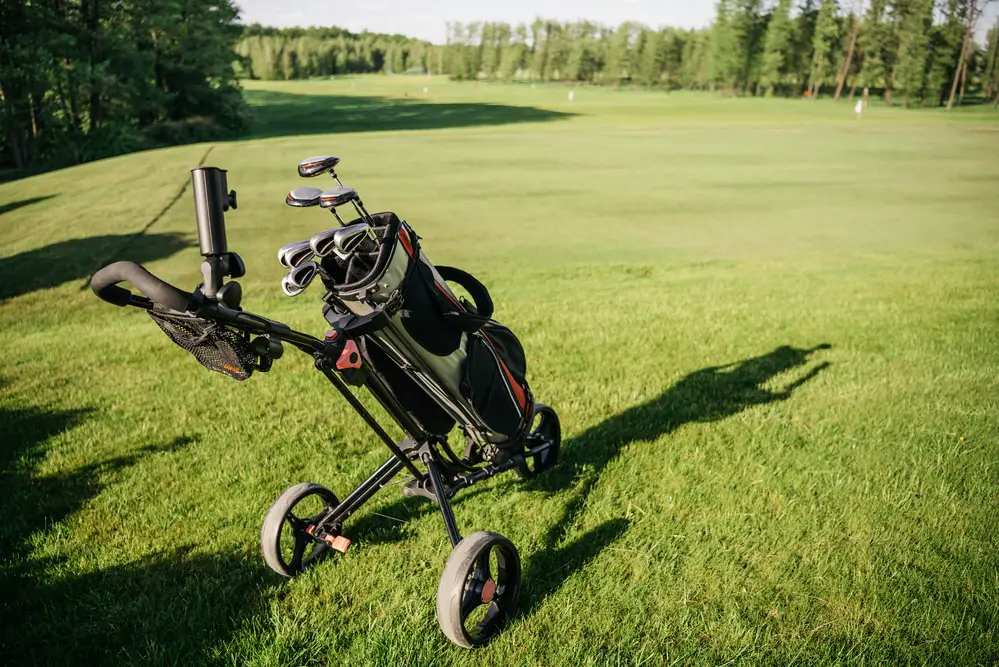Last Updated on June 6, 2023
Golf is one of the most popular sports around, and for a good reason, it’s fun and challenging. But if you could end up with painful blisters on your hands, that will keep you off the green. That’s why it’s important to do your research and select gloves specifically designed for golfing.
Golf-related blisters can be a real nuisance for golfers. They can interfere with your game and cause a lot of discomforts. The main causes of these blisters are sweaty palms, grip pressure, and friction between the hand and the club. Poor footwear can also contribute to blister formation, especially if the material is not breathable or designed for golfing conditions. Learn how to prevent blisters when playing golf with the following tips.
Proper Grip and Swing Technique
The right grip and swing technique can make all the difference when it comes to avoiding blisters. Here are some tips for golfers to keep in mind:
- Make sure your grip is not too tight or too loose. A good grip should balance comfort with control.
- Keep your hands relaxed while swinging, and do not squeeze the club too hard.
- Use a club that fits properly with your size and height.
- Practice regularly using proper form and technique so that you can develop muscle memory in the right areas of your body for an efficient swing.
A combination of these factors allows golfers to find their own swing mechanics without sacrificing comfort or performance, ultimately preventing blisters from forming in the hands while playing golf. With these tips, you can be sure that you are making strides towards a more comfortable round on the course!
Use of Gloves
When it comes to preventing blisters, golf gloves are essential. Wearing golfing gloves will significantly reduce the risk of getting blisters on your hands. The best way to make sure that you get a good fit for your golf glove is to visit a specialist store and have them measure your hand for a glove specifically designed for your size. The right fit ensures that the glove has enough grip and reduces the chances of blisters forming due to too much movement. Furthermore, when playing in hot weather, the added layer of protection from a glove provides an extra barrier against sweat and friction, which can cause blisters. For these reasons, it is recommended that when playing golf, wearing gloves should be part of your routine.
Pre and Post Golf Skin Care

Gloves can help reduce the chances of developing blisters when playing golf, but it’s also important to take care of your hands before and after a round. Establishing a skincare routine can have a tremendous impact on preventing blisters from occurring. Pre-game treatment should include moisturising hands and using sunscreen to protect them from the sun. Post-game treatment should also involve moisturising hands and taking special care of any areas that may be prone to blistering. For example, if you find yourself frequently getting blisters in a certain spot on your palm or fingers, give those areas extra attention.
Golf hand care isn’t just about preventing blisters; it’s also about keeping the skin nourished and healthy. After a round, make sure to apply an emollient cream or ointment to help heal any minor wounds, as well as prevent further damage from occurring. If you are having trouble with persistent blistering, try wearing compression bandages or moleskin around the affected area during rounds. This will provide protection while also allowing for breathability and flexibility so that you don’t feel uncomfortable while swinging your club. Taking these steps in your post-game skincare routine is essential for maintaining healthy hands for years to come!
Keeping Hands Dry and Cool
Sweaty hands are the bane of any golfer’s existence. To prevent blisters from forming, it is essential to keep the hands dry and cool. Moisture-wicking gloves are a great option for this purpose. The fabric technology used in these gloves helps to wick moisture away from the hands, keeping them dry and cool. Additionally, sweat absorbency is also an important factor in preventing blisters. Look for gloves with an absorbent material that will draw sweat away from your skin.
Grip management is key when it comes to preventing blisters, so make sure to choose gloves that provide a superior grip even when wet with sweat. In addition to moisture-wicking and sweat-absorbency, look for hand-cooling features such as breathable mesh panels. These can help reduce temperatures in your palms while you play, which can minimise friction between your skin and the club handle. Keeping your hands dry and cool while playing golf is an integral part of preventing blisters on the course.
Frequently Asked Questions
What Type of Golf Glove Should I Use to Prevent Blisters?

Choosing the right golf glove is essential for preventing blisters when playing golf. With the variety of materials, fits, sizes, types and brands available, it can be difficult to know which one is best for you.
When it comes to materials, there are many options available, including leather, synthetic fabrics and cotton blends. Leather offers the most durability and protection against moisture, while synthetic fabrics are usually lightweight and breathable. Cotton blends offer comfort but may not last as long as other materials. It’s important to choose a material that feels comfortable on your hands and helps minimise sweat buildup.
The fit of a golf glove is also very important. It should fit snugly on your hand without being too tight or too loose. Too tight of a fit will cause discomfort, while too loose of a fit will reduce grip performance. Make sure to measure your hand before selecting a size in order to get the best possible fit. Additionally, try on different types of gloves, such as full-finger or half-finger styles, to determine which one works best for you.
In addition to understanding the different materials and fits available for golf gloves, it’s also important to consider the types and brands of gloves offered by different suppliers. Different types include winter-style gloves, which provide insulation against cold weather conditions, or rain gloves, which offer extra grip in wet conditions. Brands like Callaway and Titleist have established themselves as industry leaders in providing high-quality gloves with superior construction and materials that ensure lasting performance over time.
No matter how well constructed or durable they are, if they don’t feel comfortable on your hands, then they won’t be effective at preventing blisters when playing golf, so always remember to prioritise comfort first! With these tips in mind, you’ll be able to find the perfect golf glove for your needs so you can maximise your performance on the links without having to worry about blisters!
Are There Any Special Exercises I Can Do to Strengthen My Grip and Reduce Blisters?
Gripping a golf club properly is essential for improving a golfer’s game and preventing blisters from forming in the hands. While many golfers rely on their natural grip strength, there are special exercises that can be performed to further strengthen the grip and reduce the likelihood of developing blisters.
From basic stretching routines to more complex muscle-strengthening exercises, there are plenty of options when it comes to grip exercises for golfers. These exercises can be done before or after playing golf and will help strengthen your grip, improve your swing accuracy, and prevent blisters from forming in the hands. Resistance bands are a great tool for these types of exercises as they allow you to increase the intensity of your workouts over time. Additionally, using an exercise ball or a hand gripper can also be beneficial for strengthening the muscles in your hands and forearms, which will lead to improved performance on the course.
These grip-strengthening exercises are an excellent way for any golfer to improve their game while also protecting themselves from painful blisters. Not only will they help improve swing accuracy and power, but they’ll also reduce discomfort during play by providing better protection against blister formation. So get out there and start practising these special exercises today!
Conclusion
I hope this information has been helpful in preventing blisters when playing golf. With the right glove and a good grip, you can minimise the chances of getting blisters while still enjoying your game. I recommend investing in a comfortable pair of golf shoes that allow your feet to breathe and provide extra support. You should also apply moisturiser before and after playing to keep your skin hydrated and avoid chafing. In addition, try to play golf in cooler weather whenever possible; hot weather tends to make blisters more likely. Finally, do some exercises to strengthen your grip so you can hold onto your club without squeezing too hard. With these tips and tricks, you’ll be able to enjoy a blister-free round of golf!



